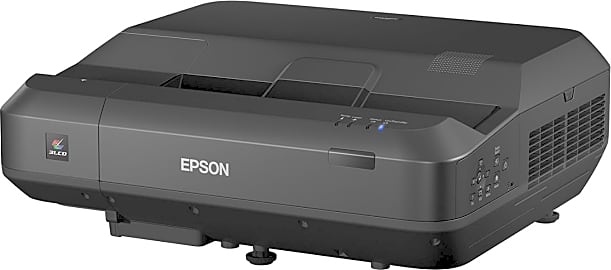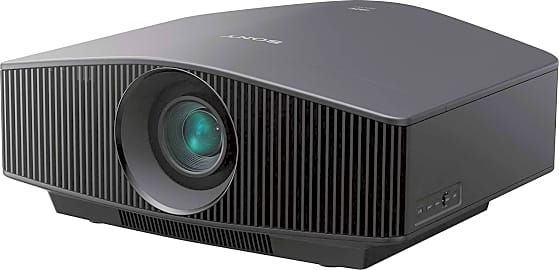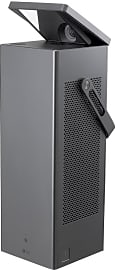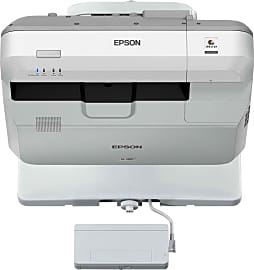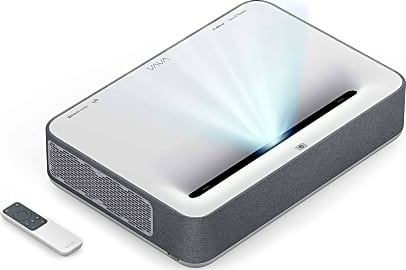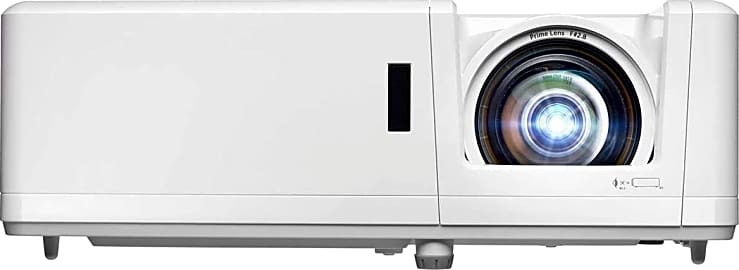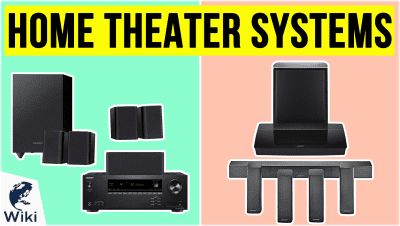The 9 Best Laser Projectors

This wiki has been updated 33 times since it was first published in October of 2018. Projectors often require a fair amount of maintenance, from replacing dead bulbs to allowing for extended periods spent warming up and cooling down for proper performance. The laser models on our list do away with that tedium. With light sources that last many thousands of hours and run at much lower temperatures than traditional bulbs, they make a smart and effective entertainment choice. When users buy our independently chosen editorial recommendations, we may earn commissions to help fund the Wiki.
Editor's Notes
October 26, 2020:
High-quality imaging technology is becoming more and more accessible for home use, and our latest updates to this list reflect this continued advancement. We've added the Optoma CinemaX P2, which offers the convenience of a short-throw model with the picture quality of a more robust home cinema device. It boasts excellent brightness, color, and contrast for its price, and its display will fill a 120-inch viewing surface from just over two feet away. We also included the Vava VA-LT002, a close competitor to the CinemaX P2 with a better built-in sound system but a clunky operating system that dropped it somewhat in our ranking.
Another new addition is the Optoma GT1090HDR, which stands out in the field as an option designed for gaming as well as viewing movies and TV. It has a lower resolution than many other entries on our list, but in exchange it offers sharply reduced lag, making it solid choice for competitive online play. It's also one of the most affordable items we've listed.
We had to drop the Epson PowerLite L610W from our list due to availability concerns, and we also removed the Sony VPLVW885ES 4K HDR Home Theater, which has been supplanted by the upgraded Sony VPL-VW915ES. The newer model features more powerful image processing software that can clean up videos and deepen color contrast in real-time, as well as a number of smart features making it easier to find the right display settings. It's also slightly less expensive than its predecessor, which is a refreshing change from typical electronics upgrades.
To get the sharpest picture out of any projector, you'll want to pair it with a quality screen. We've also reviewed the top home theater amplifiers for those interested in setting up the best possible entertainment system, and the top portable projectors for those looking for something they can use on the go.
October 29, 2018:
The Sony options are probably more expensive than the majority of home theater enthusiasts would want to spend, but they undoubtedly represent the most professional-quality picture and feature sets. Fortunately for anyone without all that money to burn, there seem to be some competitive choices from the likes of Epson and LG, though the category as a whole runs on the pricy side compared to other projector types.
Why Does Laser Reign Supreme?
For example, most projectors use LEDs, lasers, or metal-halide lamps to create light.
When you’re in the market for a projector, you’re sure to see a lot of different terms thrown around to describe them, which get even more confusing when you realize that certain types of projectors are referred to by their light source, and others by the way they divide color. For example, most projectors use LEDs, lasers, or metal-halide lamps to create light. Laser and LED models often say either “laser” or “LED” in their primary description, while metal-halide bulb models will often focus on their light splitting technology like DLP or LCD, both of which are also commonplace in certain laser and some LED devices.
For our purposes, it’s really only important to understand why laser is the superior light source, and to do that, we have to understand some of the basics. Any projection starts with a light source. If that source is white light, as it is in most non-laser options, it has to be split up into red, green, and blue wavelengths before being recombined into white light before the lens. All of this is extremely inefficient. DLP projectors use a spinning color wheel to achieve this split, which adds a constantly moving (read: breakable) component to the projection chain. Some LCD projectors use three chips dedicated each to one of the three primary projection colors to avoid having to physically split the light at the outset, but these still require a lot of energy to use compared to laser models.
With a laser projector, each beam can be programmed to perform at a specific wavelength of light, and to do so with a much smaller energy demand. They also run a lot cooler than metal-halide lamps, making them much quieter options, as they don’t need the powerful fans that those projectors do. And because they’re more energy efficient, laser projectors can be pushed to produce much brighter images than the competition, and can perform extremely short throw projections with the right mirrors in place.
Early laser projectors may have raised concerns about safety and the so-called speckle effect, as most consumers were familiar with the danger laser pointers posed to eyes and had seen the inconsistent sparkle that these pointers emitted. By the time powerful lasers make it to a projector’s lens, however, they’ve been diffused enough that no speckle remains, and they’re no more dangerous to the eye than a halogen bulb.
In short, laser models are smaller, quieter, more efficient, brighter, and more durable than pretty much any other technology out there save for the five- and six-figure DLP models you’ll see in professional cinemas. The funny thing about those cinemas, though, is that they’re already starting to switch to laser.
Choosing A Laser Projector
With lasers really only serving as the light source in these projectors, there are still plenty of features for you to mull over to make sure you get the best model for your needs. Most people in the market for laser projection are usually interested in setting it up as a major component of their entertainment center or home theater, as it is admittedly often pricier than something like LED technology, which is perfectly adequate for most office presentations and slideshows.
In the home theater environment, a lot of attention needs to be paid to the layout of the space.
In the home theater environment, a lot of attention needs to be paid to the layout of the space. This will help determine whether you end up with a more traditional long throw model or a short throw projector. As their name implies, short throw projectors only require a small amount of distance between themselves and your projection screen. They bounce their image out the lens and off an incredibly high-quality mirror, allowing some models to achieve screen sizes of up to 120 inches from just under one foot away. These are ideal if you have limited space, or if you have a TV stand established just beneath your screen. Long throw projectors, by contrast, are meant to be situated at a greater distance, and they’re ideal for ceiling installations.
Both long and short throw projectors are capable of projecting roughly the same screen sizes, but this particular feature might be rather important to you, as you might have already purchased a projection screen or cordoned off an area of wall to coat in projection paint that’s a very specific size. If your screen image is smaller than that size, then reflections off the unlit portions of the screen will create additional ambient light which will effectively reduce the perceived contrast of your projector. It’s better to find a projector that can create an image larger than your screen size, and then shrink it to fit.
Additional Features To Consider
While the big, obvious things like throw style and screen size are going to significantly whittle down your selections, it’s usually the smaller features that will tip the scales in favor of one model over another. In the projector landscape those often include things like resolution compatibility, keystone corrections, built-in audio components, and portability.
In the projector landscape those often include things like resolution compatibility, keystone corrections, built-in audio components, and portability.
The resolution of your projector will have some significant bearing on the sharpness of the image it displays, but there are a lot of variables involved in creating that image, and everything from inferior mirrors to poor projector placement can have a detrimental effect on your results. That said, it’s probably a smart idea to reach for the best resolution you can afford to help mitigate the effects of these variables.
Keystone adjustments allow you to change the angle of the projected image to within a certain number of degrees, so if the projector itself isn’t perfectly level with the screen, you can create a flat, even image without physically moving it. In general, you want as much of an adjustment range as possible, with the smallest increments therein.
Both built-in audio components and portability are rarely used features, as most home theaters have good sound systems, and these projectors have a tendency to live wherever you set them up. Still, integrated speakers can be a great alternative to all that booming bass if you’ve got kids sleeping in the next room, and the ability to conveniently bring your projector with you on your yearly glamping trip isn't necessarily something you should overlook.



